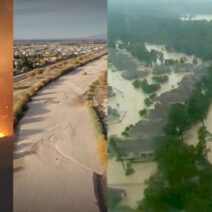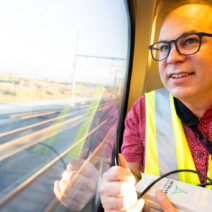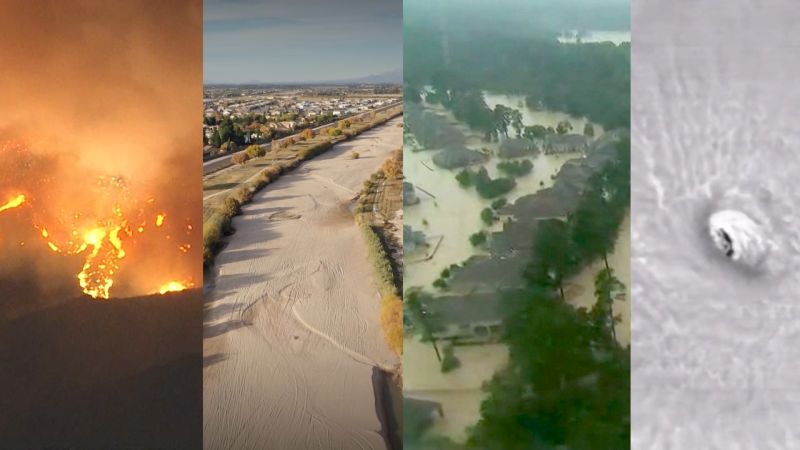In the intricate tapestry of our natural world, climate change and global warming are two threads woven tightly together, each affecting the other in profound ways. To comprehend their interconnectedness, it is essential to delineate their definitions: climate change encompasses long-term alterations in temperature, precipitation patterns, and other atmospheric conditions, while global warming specifically refers to the increase in Earth’s average surface temperature due to human-made greenhouse gas emissions, mainly carbon dioxide. This relationship between the two phenomena is akin to that of a symbiotic organism, where the health of one is inextricably linked to the other.
Global warming acts as a catalyst in the ever-evolving narrative of climate change. Picture the Earth as a richly diverse garden. Global warming functions as an unchecked weed, spreading its roots and choking the life from the surrounding plants. The rise in global temperatures precipitates a domino effect, yielding changes that resonate throughout the ecosystem. For instance, when the planet heats up, ice caps melt, leading to a rise in sea levels. This not only threatens coastal communities but also disrupts marine ecosystems, where delicate balances destabilize under warmer, less salty waters.
In the realm of atmospheric dynamics, the relationship becomes even more complex. As the Earth’s average temperature ascends, the atmosphere’s capacity to hold moisture increases—a phenomenon known as the Clausius-Clapeyron relation. Following this principle, an increment in temperature can lead to more intense and frequent precipitation events. Imagine an overzealous painter, whose brushstrokes become increasingly forceful with each pass, ultimately muddying the canvas. This hyperactive hydrological cycle results in both deluges and droughts, showcasing the cruel irony of a warming planet: while some regions may become inundated with rainfall, others may face the withering effects of acute water scarcity.
The implications of this phenomenon extend beyond mere weather patterns. Agriculture, a critical pillar of human civilization, finds itself under siege from the shifting climate. With global warming elevating temperatures, crop yields can plummet in formerly fertile regions. Consider a farmer nurturing fragile seedlings, only to find the supportive soil eroding beneath their roots due to extreme weather events. Moreover, pests and diseases flourish in warmer conditions, leading to decreased crop resilience. The consequences reverberate through global food systems, placing added strain on an already precarious equilibrium.
Moreover, the rise in atmospheric carbon dioxide is not solely a byproduct of global warming; it is both a cause and an effect within this intertwined crisis. Forests serve as carbon sinks, absorbing CO2 from the atmosphere. However, as these ecosystems face the dual pressures of increased temperatures and changing rainfall patterns, their capacity for carbon sequestration diminishes. Picture a grand, ancient tree—the mighty oak—standing sentinel over a forest. If its environment changes dramatically, its ability to thrive is compromised, ultimately leading to a bittersweet decline, as it becomes a source of emissions rather than a buffer. This transformation is emblematic of the greater tragedy at hand.
The interdependence between global warming and climate change is further accentuated by events like forest fires, which have become increasingly common as temperatures rise. These conflagrations not only release vast amounts of stored carbon into the atmosphere, amplifying global warming, but they also devastate ecosystems that once captured carbon effectively. It creates a vicious cycle, each component feeding into the next—a world ablaze of both metaphor and reality.
Permafrost, an ancient natural archive in the Arctic, is another critical element in this nuanced relationship. As global temperatures rise, this frozen layer begins to thaw, releasing previously trapped methane—a greenhouse gas far more potent than CO2. The release of this methane amplifies the greenhouse effect, contributing further to global warming. Picture a long-dormant volcano awakening, belching forth its fumes and reshaping the landscape around it. As this cycle intensifies, it raises the stakes for future generations, portending dire consequences that extend far beyond our immediate horizon.
This complex interplay requires immediate and poignant action. To tackle climate change effectively, a robust focus on mitigating global warming is paramount. Policymakers, scientists, and activists must embrace a multi-faceted strategy that encompasses renewable energy, reforestation, and sustainable agricultural practices. Imagine a communal chalice, symbolizing the collective effort required to nourish and protect our planet. With each contribution—whether through solar power, afforestation initiatives, or innovative farming methods—we pour in our commitment to restoring ecological balance.
Moreover, public awareness and education play a crucial role in this battle. Individuals must recognize their agency in the fight against climate change and global warming. It is about harnessing the power of collective action—small efforts can amount to significant change. Picture a myriad of fireflies illuminating a dark forest night; while each glow may seem insignificant alone, together they create a spectacle that can brighten even the bleakest of surroundings.
In conclusion, as global warming propels climate change forward, it is imperative that we understand their symbiotic relationship. The challenges they present are daunting, yet resolute action can carve pathways toward a more resilient future. The fate of our planet hangs in the balance, and it is up to every individual to engage with this intertwined crisis, fostering a sustainable world for generations to come. Like the intertwined roots of a forest, our collective efforts can shore up the foundation of a thriving, harmonious ecosystem, one where the threads of climate change and global warming are rewoven toward a more hopeful narrative.




